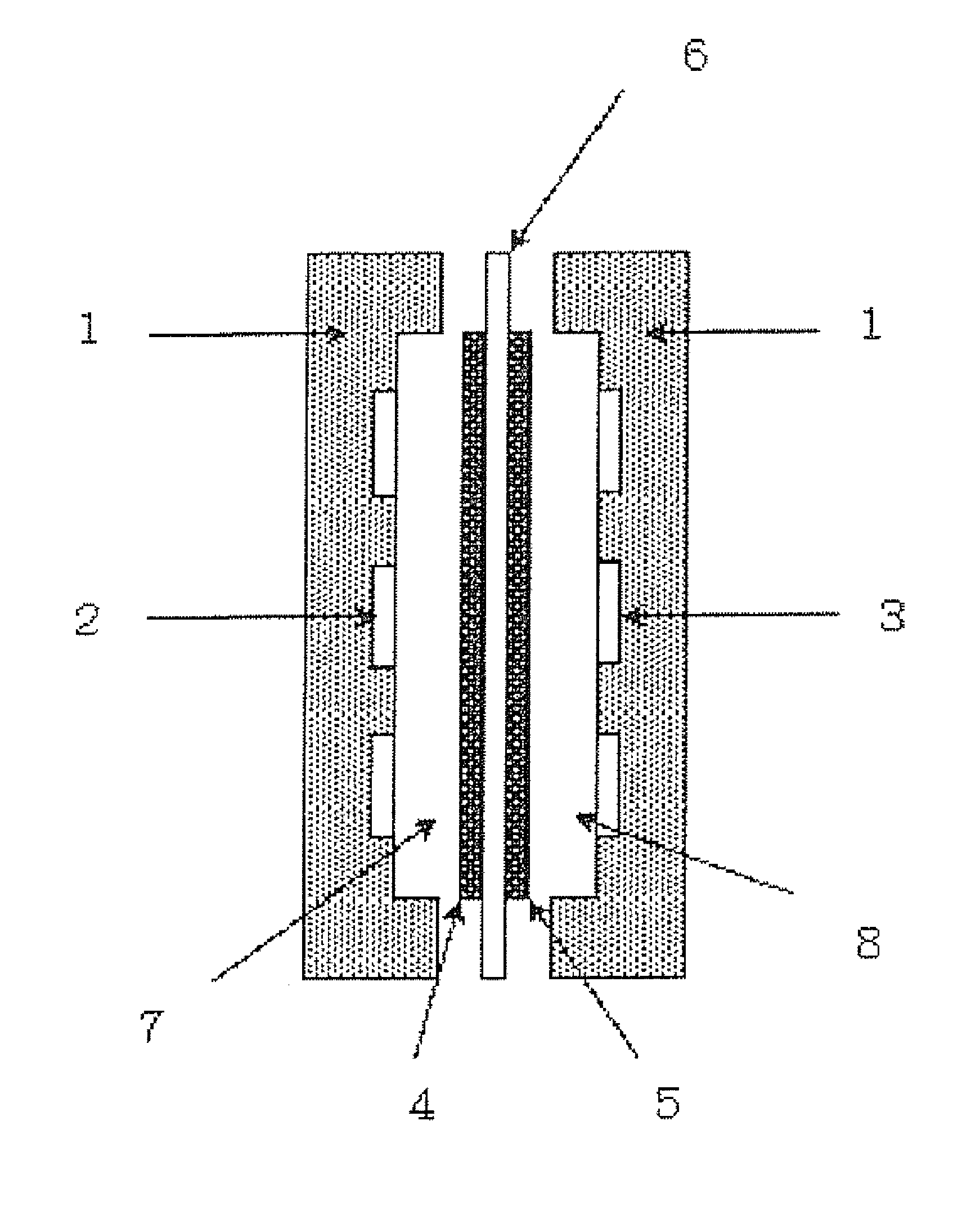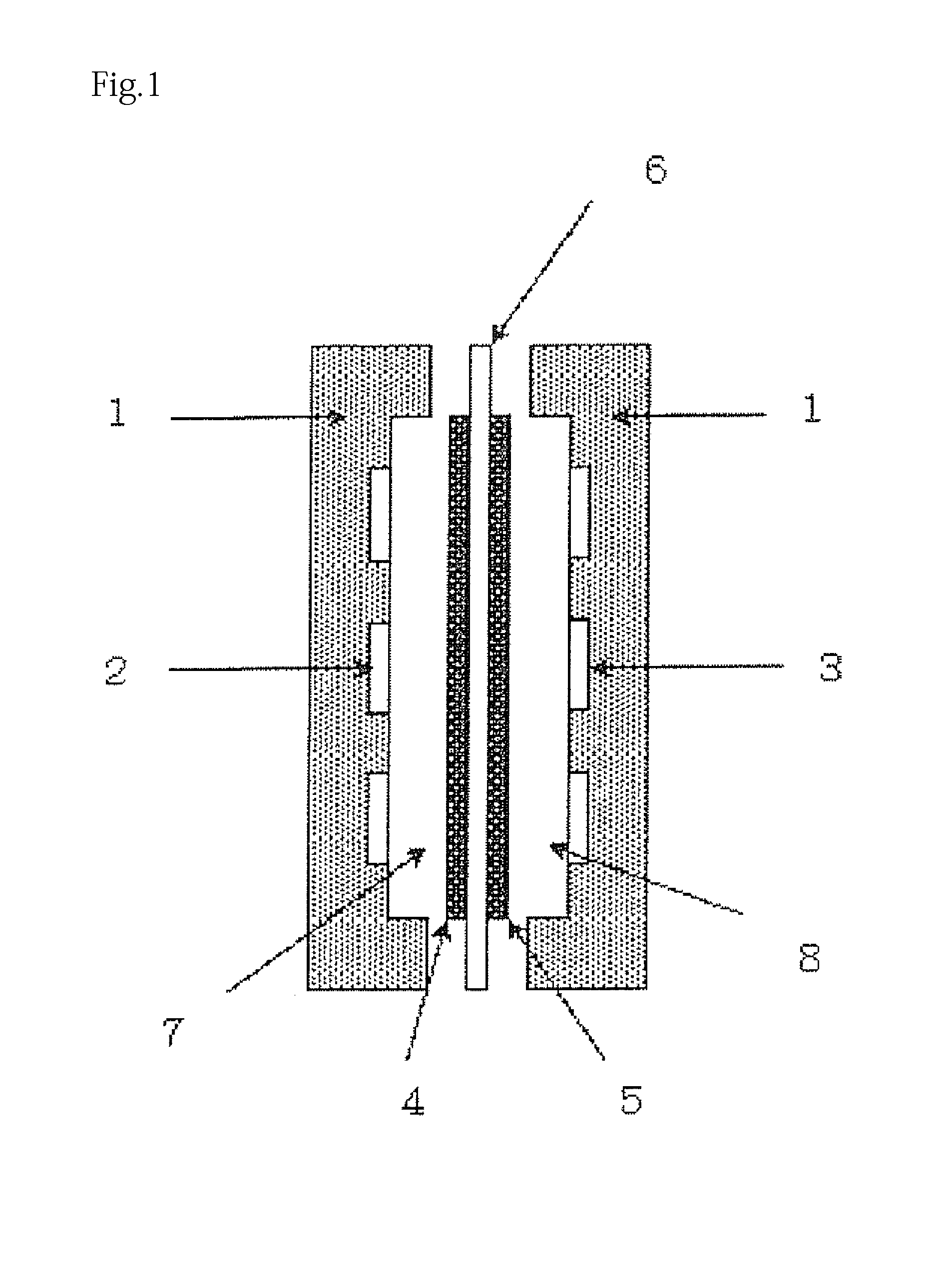Catalyst Electrode Layer and Method for Producing Same
a catalyst electrode and electrode layer technology, applied in the direction of organic-compound/hydride/coordination-complex catalysts, physical/chemical process catalysts, cell components, etc., to achieve excellent durability and junction, excellent catalytic performance, and efficient production of polymer electrolyte fuel cells
- Summary
- Abstract
- Description
- Claims
- Application Information
AI Technical Summary
Benefits of technology
Problems solved by technology
Method used
Image
Examples
example 1
Method of Preparing a Laminate: Method of Laminating a Catalyst Electrode Precursor Layer on the Ion Exchange Membrane and Thereafter Forming the Laminate
[0136]A catalyst electrode precursor layer composition was prepared by taking out 1 g of the anion conductive elastomer precursor 1, dissolving it in 100 ml of chloroform, adding 2 g of a catalyst (catalyst in which platinum particles having a particle diameter of 2 to 10 nm were carried on carbon particles having a primary particle diameter of 30 to 50 nm) and dispersing them. This was applied on a 23 mm square (about 5 cm2) on an anion exchange membrane (the anion exchange capacity: 1.8 mmol / g, the water content at 25° C.: 25 mass %, the thickness of the dried membrane: 28 μm, the outer dimensions: 40 mm square), and was thereafter dried, with the result that a membrane electrode assembly intermediate (the laminate structure of the anion exchange membrane / the catalyst electrode precursor layer) was obtained. The membrane electrod...
examples 2 to 6
[0155]Except that a laminate was prepared using the anion conductive elastomer precursor 1 and the monofunctional quaternarizing agent and the multifunctional quaternizing agent shown in Table 2, the same operation as in example 1 was performed. The thickness of the catalyst electrode layer in the laminate was the same as in example 1. The water content of the laminate obtained was measured, and thereafter the laminate was assembled into the fuel cell and evaluation in the output test and the durability test was performed in the same manner as in example 1. The results of these measurements are shown in Table 2.
[0156]The followings have been found from the results of these examples 1 to 6.
[0157]The water content was first varied by varying the ratio of the quaternizing agent, and its value was decreased as the amount of multifunctional quaternizing agent was increased. This is because the degree of cross-linking of the anion conductive elastomer was increased as the amount of multif...
examples 7 to 12
[0165]A catalyst electrode precursor layer composition was prepared by taking out 1 g of the anion conductive elastomer precursor shown in Table 4, dissolving it in 100 ml of chloroform, adding 2 g of a catalyst (catalyst in which platinum particles having a particle diameter of 2 to 10 nm were carried on carbon particles having a primary particle diameter of 30 to 50 nm) and dispersing them. This was applied on two carbon porous membranes (HGP-H-060 made by Toray Industries, Inc., its thickness of 200 μm: the gas diffusion layer), which was cut into the outer dimention of 23 mm square, and was thereafter dried, with the result that a gas diffusion electrode intermediate (the laminate structure of the carbon porous membrane / the catalyst electrode precursor layer) was obtained. The gas diffusion electrode intermediate was immersed in 10 ml of a mixture of the monofunctional quaternarizing agent and the multifunctional quaternizing agent shown in Table 4. After 48 hours, it was taken ...
PUM
| Property | Measurement | Unit |
|---|---|---|
| humidity | aaaaa | aaaaa |
| RH | aaaaa | aaaaa |
| temperature | aaaaa | aaaaa |
Abstract
Description
Claims
Application Information
 Login to View More
Login to View More - R&D
- Intellectual Property
- Life Sciences
- Materials
- Tech Scout
- Unparalleled Data Quality
- Higher Quality Content
- 60% Fewer Hallucinations
Browse by: Latest US Patents, China's latest patents, Technical Efficacy Thesaurus, Application Domain, Technology Topic, Popular Technical Reports.
© 2025 PatSnap. All rights reserved.Legal|Privacy policy|Modern Slavery Act Transparency Statement|Sitemap|About US| Contact US: help@patsnap.com



